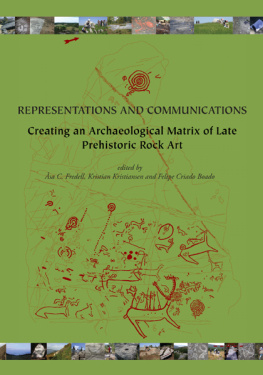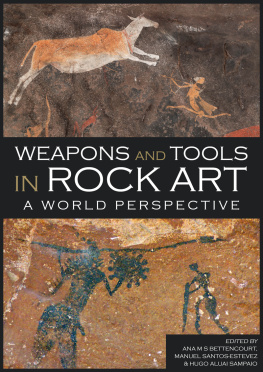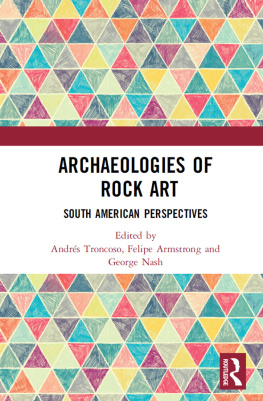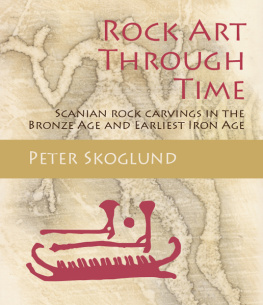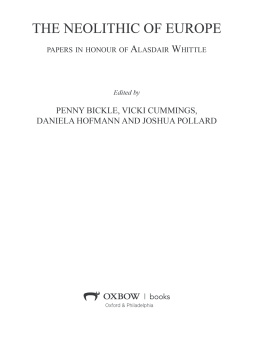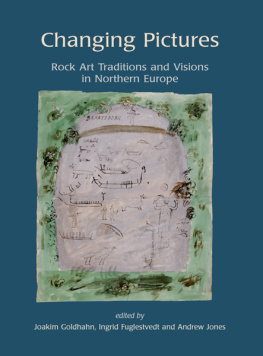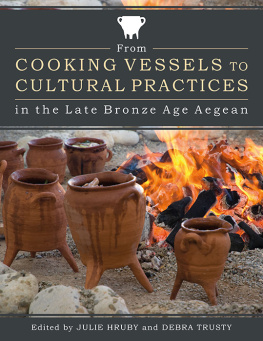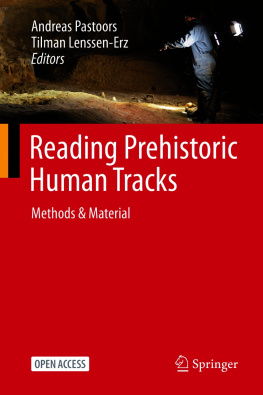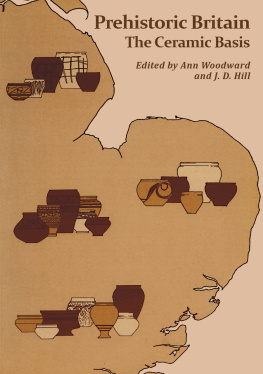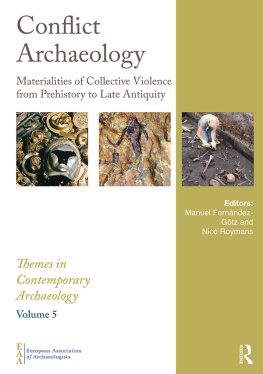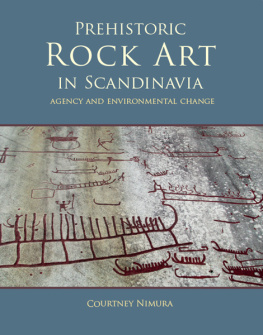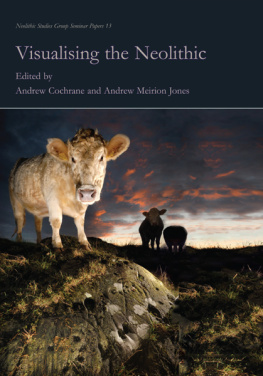
Published by
Oxbow Books, Oxford, UK
Oxbow Books and the individual author, 2010
ISBN 978-1-84217-397-8
EPUB ISBN: XXXXXXXXXXXXX
This book is available direct from:
Oxbow Books, Oxford, UK
(Phone: 01865-241249; Fax: 01865-794449)
and
The David Brown Book Company
PO Box 511, Oakville, CT 06779, USA
(Phone: 860-945-9329; Fax: 860-945-9468)
or from our website
www.oxbowbooks.com
A CIP record for this book is available from the British Library
Library of Congress Cataloging-in-Publication Data
Representations and communications : creating an archaeological matrix of late prehistoric rock
art / edited by sa C. Fredell, Kristian Kristiansen, and Felipe Criado Boado.
p. cm. -- (SARA ; v. 1)
Includes bibliographical references.
ISBN 978-1-84217-397-8
1. Petroglyphs--Europe. 2. Petroglyphs--Sweden. 3. Petroglyphs--Spain--Galicia (Region) 4.
Social archaeology--Europe. 5. Social archaeology--Sweden. 6. Social archaeology--Spain--Galicia
(Region) 7. Excavations (Archaeology)--Sweden. 8. Excavations (Archaeology)--Spain--Galicia
(Region) 9. Bronze Age--Europe. 10. Iron Age--Europe. I. Fredell, sa. II. Kristiansen, Kristian,
1948- III. Criado Boado, Felipe.
GN799.P4R45 2010
709.01130936--dc22
2010013076
Printed and bound in Great Britain by
Hobbs the Printers, Southampton
Preface
This book is the product of a fruitful four-year-long project collaboration between the archaeology department at the University of Gothenburg and the Laboratory of Heritage (LaPa) of the Spanish National Research Council (CSIC) in Santiago de Compostela in Galicia between 2002 and 2006. Both areas have a rich heritage of Bronze Age rock art, and the project led to the development of new innovative ways to perceive, excavate and understand this material. In western Sweden, the numerous rock art sites had already led to the declaration of Tanum as a World Heritage Site. A new museum was established during the 1990s and excavations of rock art sites continued for several years by the department and the museum. However, through generous funding from the European Unions Marie Curie programme for Research Training Networks as well as from the Swedish Riksbankens Jubileumsfond it was possible to exchange young researchers between our departments for shorter and longer periods, just as three research seminars were instrumental in presenting and discussing the results of our research programmes. The first research seminar was held at the famous Nmforsen rock art site in Middle Sweden in 2003, the second in the new archaeological park for rock art in Campolameiro, Galicia, that was being created during the project and led to an extensive research programme. A final conference was held in 2006 in Sweden at the site of the famous Kivik burial with pictorial stones. The papers from this conference in 2006 summarised the results from our four years of collaboration that are presented here. Most of the Spanish and Swedish contributors spent some of their research time in respectively Galicia and western Sweden respectively, and took part in excavations and the recording of rock art. It will be obvious from several of the articles that new interpretations and datings of rock art motifs were the immediate results of this collaboration, just as the excavations revealed a great deal of new information about the rituals taking place in front of and around rock art sites. However, we also employed Indo-European texts and folklore on rituals and religion as a new interpretative strategy. The results of these new theoretical and methodological strategies in rock art research demonstrate the power of collaborative and comparative research. In a way, the research scheme created between both institutions led us to a methodological dialogue that made innovations and interpretative developments not only possible but unavoidable. Research strategies and ideas developed in each area were transferred to the other, thus increasing the scientific feedback.
As project leaders we wish to thank all participants for their willingness to publish the papers from the conference, and we wish to thank sa Fredell for having carried out the time-consuming editorial work. We hope the papers transmit some of the inspiration and enthusiasm that the project created. Finally we wish to thank Riksbankens Jubileumsfond in Sweden for their financial support of the publishing.
Kristian Kristiansen
Felipe Criado Boado
List of Contributors
Lasse Bengtsson
Sweden
Felipe Criado Boado
Padre Sarmiento Institute of Galician Studies (CSIC-XuGa), Spain
sa C. Fredell
Padre Sarmiento Institute of Galician Studies (CSIC-XuGa), Spain and Institute of archaeology and classical studies, Gteborg University, Sweden
Marco V. Garca Quintela
Laboratory of Heritage, Paleoenvironment and Landscape (PSIGS, CSIC-XuGa), Spain
Kristian Kristiansen
Institute of archaeology and classical studies, Gteborg University, Sweden
Johan Ling
Institution of Archaeology and Classical Studies, Gteborg University, Sweden
Per Nilsson
The Swedish National Heritage Board, Archaeological Excavations Department
Manuel Santos Estvez
Padre Sarmiento Institute of Galician Studies (CSIC-XuGa), Spain
Yolanda Seoane Veiga
Padre Sarmiento Institute of Galician Studies (CSIC-XuGa), Spain
A Life Aquatic?
Looking at the relationships between settlements, rock art and sea levels in the Himmelstalund region of eastern Sweden
Per Nilsson
The existence of rock-art panels surrounding the Motala River to the west of the city of Norrkping has been well known among Scandinavian Bronze Age researchers since the late 19th century. Abundant and varied motifs can be found at locations such as Himmelstalund, Fiskeby and Ekenberg. One of Swedens largest prehistoric settlements was discovered in the same area, at Pryssgrden, during the early 1990s the settlement having been densely inhabited in the Late Bronze- and Early Iron Age. Recent excavations south of the settlement show that areas previously regarded as marshland, or even submerged land, were also settled. In this article I present some of the results of these excavations, including one made in close connection to the most famous rock-art site, Himmelstalund. The major rock-art sites are often interpreted as possible meeting-places where both religious ceremonies and trading activities took place. It is suggested here that one of the main reasons why such gatherings occurred at this special place was that the river offered exceptionally good seasonal fishing opportunities.
Introduction
This article aims at a discussion of Bronze- and Early Iron Age settlements, shore displacement and livelihood in one of the best known rock-art regions of southern Scandinavia; the area surrounding the former outflow of the Motala River, situated to the west of Norrkping in the south-eastern part of Sweden. The region is well known for its number of rock-art sites, examples of which include Himmelstalund, Ekenberg and Fiskeby ().
In this article I present and discuss results of excavations closely connected with some of the rock-art sites. New C14-datings indicate that there was more dry land during the Bronze- and Early Iron Age than has previously been estimated. Excavations made in recent years also show that settlements from this period can be found at lower levels than were earlier thought possible. This is interesting, because it provides useful data for addressing the question of what kind of landscape surrounded the rock-art sites and their eventual connection to water or marshlands. It now seems possible to find settlements, and perhaps even rock-art sites, at levels as low as 1015 metres above the present sea level. Although it seems that there was more inhabitable land during this period than previously estimated, this ground must have been quite damp for parts of the year. In this article I aim to discuss some of the possible reasons why people chose to settle in these periodically hostile environments.
Next page
